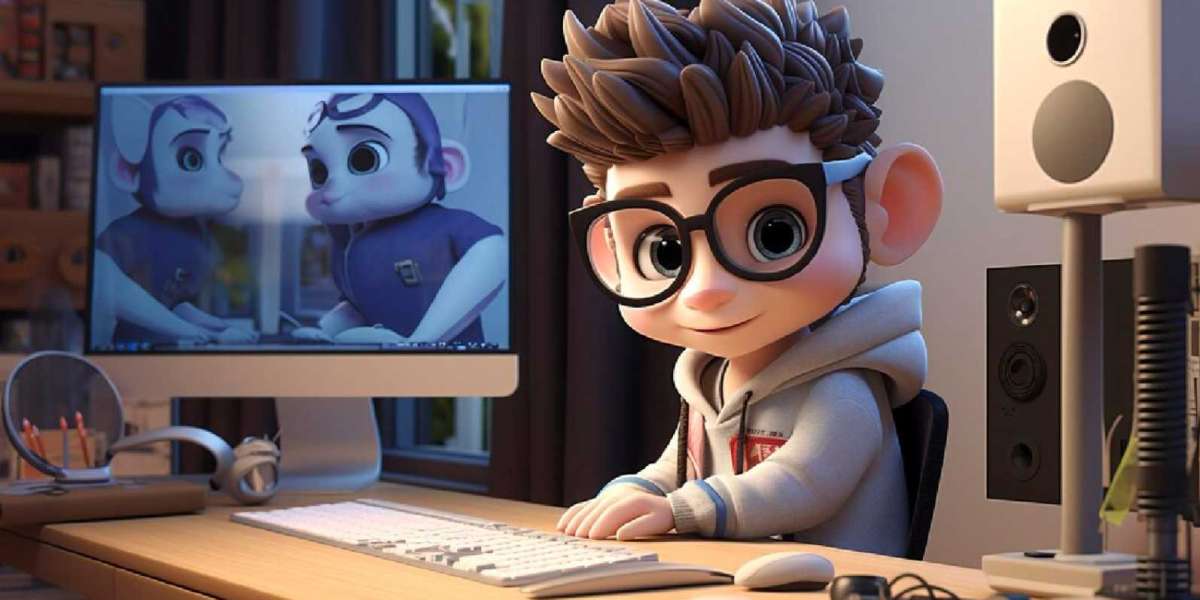In the ever-evolving world of digital storytelling, color theory in animation stands as one of the most powerful tools for creators. It can influence a viewer’s emotions, shape narrative direction, and determine how memorable a piece of content becomes. Whether you're producing an animated short, a marketing video, or a full-length series, understanding how to strategically apply color is essential in 2025.
This post explores how color theory impacts animation, how top-tier animation studios in Ontario are leveraging color in creative ways, and where animators are showcasing their work beyond YouTube—thanks to the rise of several impressive YouTube alternatives.
What Is Color Theory in Animation?
Color theory in animation refers to the principles and psychology behind how colors interact and affect the perception of a scene or character. It's more than just aesthetics—color influences how a story feels and how deeply it resonates.
Key Components of Color Theory in Animation:
Hue – The base color (e.g., red, blue, yellow).
Value – The lightness or darkness of a color.
Saturation – The intensity or purity of a color.
Color Harmony – The combination of colors that are visually pleasing.
Temperature – Warm colors (red, orange, yellow) evoke energy or danger; cool colors (blue, green) evoke calmness or melancholy.
Skilled animators use these principles to:
Set the tone and mood of a scene.
Signal character traits or emotional states.
Guide the viewer’s eye through the frame.
Enhance storytelling through symbolic meanings.
Why Color Theory Matters More Than Ever in 2025
With increasingly sophisticated audiences and visual competition across platforms, subtle and deliberate use of color makes animation stand out. Color is now deeply tied to user experience, branding, accessibility, and even algorithmic engagement.
For instance, an animation targeting Gen Z might use bold neon palettes that match current digital aesthetics. A health explainer video might opt for soft greens and blues to evoke trust and calmness. Color theory gives animators the creative edge to shape perception at a subconscious level.
How Animation Studios in Ontario Are Leading the Way
Ontario, Canada has emerged as a global animation powerhouse, with several studios excelling in 2D, 3D, and motion design. Many animation studios in Ontario have fully integrated color theory into their production pipelines, resulting in animations that are not only visually striking but emotionally resonant.
What Sets Ontario Studios Apart:
Art Direction Expertise: These studios employ experienced art directors who guide color palettes and design cohesion.
Collaboration with Colorists: Dedicated professionals work on color grading, mood boards, and palette development.
Diverse Portfolio: From educational series and brand commercials to indie films, studios use color strategically for different audiences.
Access to Government Grants: Ontario’s media-friendly tax incentives allow studios to invest more in creative development, including color-focused pre-production.
Studios such as Jam Filled, House of Cool, and Brown Bag Films (Toronto branch) are just a few names that have delivered globally recognized work with expert-level use of color.
Real-World Applications of Color in Animation
Here are some common ways color theory in animation is used in 2025:
Red for urgency or danger (e.g., in emergency explainer videos).
Blues and purples for calm and professionalism (ideal for finance or health content).
High-contrast palettes for accessibility (especially for viewers with color blindness or visual processing difficulties).
Desaturated tones for serious or historical narratives (used in documentaries or biopics).
Modern animation is also embracing stylized art, where exaggerated color schemes break the rules of realism to tell stronger stories. This is especially prominent in fantasy, sci-fi, or indie content that relies on visual experimentation.
YouTube Alternatives for Animation Creators in 2025
While YouTube remains a giant, many animators and studios are diversifying their content strategy by exploring YouTube alternatives. Why? Because creators are seeking better monetization models, fewer algorithm constraints, and more niche-oriented audiences.
Top YouTube Alternatives for Animators:
Vimeo
Known for high-quality video hosting, Vimeo is ideal for showcasing professional animated portfolios and branded content. It’s popular among agencies and studios alike.Nebula
This creator-owned platform is gaining popularity for its curated, ad-free model. Perfect for educational and narrative animation content.Odyssey
Built on blockchain technology, Odyssey offers decentralized content hosting and supports free speech and creator control.Dailymotion
A long-standing platform with a global reach, Dailymotion supports high-quality video uploads and monetization options.TikTok and Instagram Reels
Short-form animations are thriving on these platforms. Creative, colorful animations—especially those leveraging bold color theory—tend to go viral.
By publishing on multiple platforms, creators ensure their animated work gets the recognition it deserves—without depending solely on YouTube's algorithm.
Tips for Applying Color Theory in Your Next Animation
Create a Color Script: Plan the emotional journey of your animation through a sequence of color palettes.
Use Contrast Wisely: Guide viewers’ focus by contrasting characters and backgrounds.
Mind the Brand: If you're working for a client, align with their color palette while still telling an engaging story.
Test Your Palette: See how your colors look across devices and in both light/dark modes.
Collaborate Early: Involve colorists and art directors in early storyboard phases for cohesive visual direction.
Conclusion
In 2025, color theory in animation isn’t just a design choice—it’s a storytelling strategy. Whether you’re working with animation studios Ontario or creating content independently, understanding how color influences viewer perception gives you a serious creative advantage.
And with a growing number of YouTube alternatives, animators now have more freedom to share their color-rich stories with the world. Whether you're an indie animator or part of a large production team, mastering color and choosing the right platform are key steps toward engaging your audience and standing out in an oversaturated digital space.







